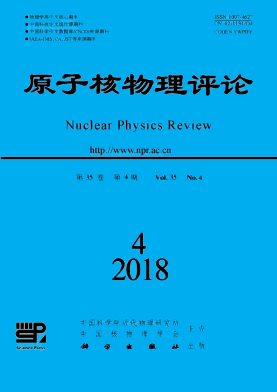|
[1]
|
MENG J, RING J. Phys Rev Lett, 1996, 77:3963; 1998, 80:460. |
|
[2]
|
ZHOU S G, MENG J, RING P, et al. Phys Rev C, 2010, 82:011301(R). |
|
[3]
|
LIU Q, GUO J Y, NIU Z M, et al. Phys Rev C, 2012, 86:054312. |
|
[4]
|
HAMAMOTO I. J Phys G:Nucl Part Phys, 2010, 37:055102. |
|
[5]
|
CAO L G MA Z Y. Phys Rev C, 2002, 66:024311. |
|
[6]
|
ZHANG S S, SMITH M S, ARBANAS G et al. Phys Rev C, 2012, 86:032802(R). |
|
[7]
|
FAESTERMANN T, MOHR P, HERTENBERGER R, et al. Phys Rev C, 2015, 92:052802(R). |
|
[8]
|
SHI M, SHI X X, NIU Z M, et al. Eur Phys J A, 2017, 53:40. |
|
[9]
|
MYO T, KIKUCHI Y, MASUI H, et al. Prog Part Nucl Phys, 2014, 79:1. |
|
[10]
|
MICHEL N. J Phys G:Nucl Part Phys, 2009, 36:013101. |
|
[11]
|
MICHEL N, MATSUYANAGI K, STOITSOV M. Phys Rev C, 2008, 78:044319. |
|
[12]
|
SEBA P. Lett Math Phys, 1988, 16:51. |
|
[13]
|
IVANOV I A, HO Y K. Phys Rev A, 2004, 69:023407. |
|
[14]
|
PESTKA G, BYLICKI M, KARWOWSKI J. J Phys B:At Mol Opt Phys, 2006, 39:2979. |
|
[15]
|
ALHAIDARI A D. Phys Rev A, 2007, 75:042707. |
|
[16]
|
ACKAD E, HORBATSCH M. Phys Rev A, 2007, 76:022503. |
|
[17]
|
BYLICKI M, PESTKA G, KARWOWSKI J. Phys Rev A, 2008, 77:044501. |
|
[18]
|
MENG J, TOKI H, ZHOU S G, et al. Prog Part Nucl Phys, 2006, 57:470. |
|
[19]
|
RING P, LITVINOVA E, VRETENAR D. Prog Part Nucl Phys, 2007, 59:393. |
|
[20]
|
SANDULESCU N, GENG L S, TOKI H, et al. Phys Rev C, 2003, 68:054323. |
|
[21]
|
ZHANG S S, MENG J, ZHOU S G, et al. Phys Rev C, 2004, 70:034308. |
|
[22]
|
ZHANG L, ZHOU S G, MENG J, et al. Phys Rev C, 2008, 77:014312. |
|
[23]
|
SUN T T, ZHANG S Q, ZHANG Y, et al. Phys Rev C, 2014, 90:054321. |
|
[24]
|
GUO J Y, FANG X Z, JIAO P, et al. Phys Rev C, 2010, 82:034318. |
|
[25]
|
AGUILAR J, COMBES J M. Commun Math Phys, 1971, 22:269. |
|
[26]
|
BALSLEV E, JCOMBES J M. Commun Math Phys, 1971, 22:280. |
|
[27]
|
SIMON B. Commun Math. Phys, 1972, 27:1. |
|
[28]
|
SHI M, LIU Q, NIU Z M, et al. Phys Rev C, 2014, 90:034319. |
|
[29]
|
ZHU Z L, NIU Z M, LI D P, et al. Phys Rev C, 2014, 89:034307. |
|
[30]
|
SHI M, LIU Q, NIU Z M, et al. Phys Rev C, 2014, 90:034319. |
|
[31]
|
SHI M, GUO J Y, LIU Q, et al. Phys Rev C, 2015, 92:054313. |
|
[32]
|
LI N, SHI M, GUO J Y, et al. Phys Rev Lett, 2016, 117:062502. |
|
[33]
|
DING K M, SHI M, GUO J Y, et al. Phys Rev C, 2018, 98:014316. |






 甘公网安备 62010202000723号
甘公网安备 62010202000723号 DownLoad:
DownLoad: